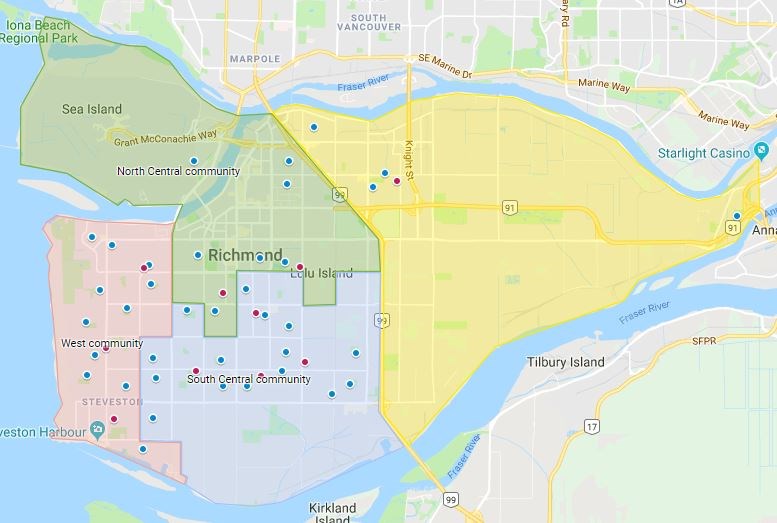The school board is looking at strategies to manage its space challenges. Suggestions include reducing space by the equivalent of one high school and five elementary schools, moving French immersion from McRoberts to Palmer secondary after consolidating McNair and McRoberts or consoidating Palmer and McNair and keeping French immersion at McRoberts.
These are just a few of the strategies the Richmond board of education will contemplate as they think about the best way to deal with aging schools, declining enrolment in some areas and high growth in others, the possibility of damage to schools from earthquakes but also the educational needs of all students.
The draft Long-Range Facilities Plan (LRFP), currently out for public consultation, divides the school district into four main areas and presents specific strategies for each. Previous LRFP exercises have ended with the threat of school closures, and the LRFP does mention “consolidation” of catchments which would inevitably lead to closures.
However, the Minister of Education, Rob Fleming, told the Richmond News his government isn’t pushing for closures.
Fleming said the provincial government has removed restrictions that previously stalled seismic upgrades to schools across the province, for example, the requirement to be 95-per-cent full.
“We’ve made it very clear to school districts both through our operating funding as well as new instructions around the LRFP, our government is not interested in closing schools,” Fleming told the Richmond News. “We want districts to focus on making good educational decisions.”
Fleming said the provincial government is asking school districts to align their LRFPs more closely with municipalities’ Official Community Plans, and some of the densification planned for Richmond could bring in more students.
“It would be a mistake to close schools that would be vibrant in a few years with a higher student population,” he said.
In two of the areas, in the west and south central areas of Richmond, the LRFP suggests a reduction in space, but in the north central area there’s a need for expansion of schools -- largely due to the expectation of housing densification in the city centre – and, in the east, boundary changes are proposed to deal with shifting populations.
The LRFP is being developed to rationalize capital needs, including seismic upgrading to 35 schools in Richmond and $170 million needed in other building maintenance.
Recommendations for the west community of schools include boundary changes, but also school catchment consolidations that would decrease the number of surplus seats to what would equal two medium-sized elementary schools. The LRFP states this could happen by September 2021.
In the south central community of schools, the LRFP suggests decreasing surplus space by the “equivalent” of one secondary school and two medium-sized elementary schools by September 2021. In tackling the issue of enrolment and French immersion, a suggested strategy is to move the McRoberts French immersion program to Palmer secondary if the McNair and McRoberts catchments were consolidated as one, or, alternatively, to consolidate Palmer and McNair and keep the French immersion program at McRoberts.
The north central area, which includes the city centre where dense neighbourhoods are being planned, for example, 4,000 new homes at Lansdowne, there are only two schools not expected to be close to full or over-capacity, Ferris elementary and Sea Island, the latter of which is currently at 13 per cent capacity. The strategy proposed in the draft LRFP for Sea Island is to move the students to Brighouse and repurpose the building for other educational purposes.
The document outlines expanding schools in north central Richmond schools and building a new one (which are subject to ministry funding): expansion of Cook elementary (Phase 1 in 2020 and Phase 2 in 2025), Tomsett elementary (Phase 1 in 2021 and Phase 2 in 2031), Brighouse elementary (2022) and Talmey elementary (Phase 1 in 2023 and Phase 2 in 2030), and a new school at Dover Park elementary (2028) with an expansion in 2032.
In the east community of schools, there is only one high school, Cambie secondary, and it is expected to be able to accommodate future growth. In fact, the LRFP suggests encouraging some McNair students to attend Cambie secondary. Other suggested changes are to tinker with catchment boundaries.
In addition, because of expected growth in Hamilton, the school district has a “high-priority project” request in the five-year capital plan for a four-classroom addition to the school.



